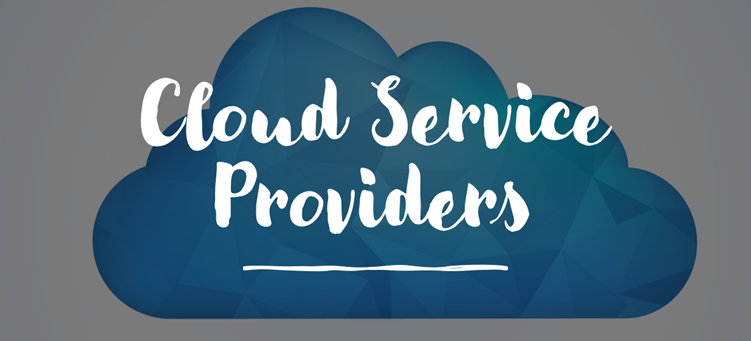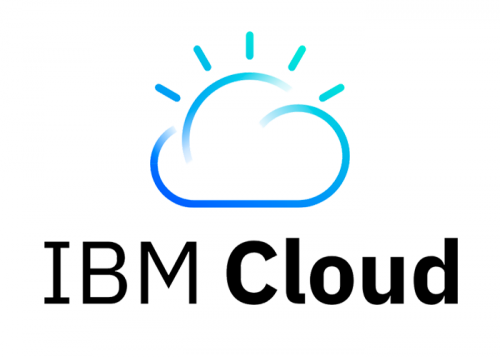“Hello my fellow technology enthusiasts, I wanted to speak about a subject that is recognized in its true nature by all but seldom understood. The topic is “Cloud Computing” and will be addressed in series. So, let ‘s dive into the world of cloud computing. In this blog I am going to focus on cloud service providers which include:
Cloud service providers
Services Provided by Cloud Providers
Service providers
Cloud service providers

The data was historically stored on hard drives that were not safe and protected since everyone could access the disc. Today, cloud storage providers also replaced hard drive search technologies and come up with a fresh idea called cloud technologies in which the cloud stores data. Cloud storage systems are offered by many enterprises and they are very reliable.
Click here to know more about how to choose your cloud service provider.
Services Provided by Cloud Providers
Infrastructure as a service (IaaS), a vendor provides physical computer hardware such as CPU processing, memory, data storage, and network connectivity. IAAS allows users to run selected operating system and software applications. Vendors generally control and maintain physical computer hardware. Users generally control and maintain operating systems and software applications. The actual IAAS suppliers are scaling their IAAS layer to such immense levels that the marginal cost of adding more GHz, GB, packaging, etc. converges to zero.
Platform as a service (PaaS), a vendor provides infrastructure in addition to services and web servers such as operating systems and server applications. PaaS enables customers to use the provider’s cloud infrastructure to deploy web applications and other customer-developed software using provider-supported programming languages. In general, the vendor controls and maintains physical computer hardware, operating systems, and server applications. In general, the user only controls and maintains user-developed software applications. This framework gives developers easy access to a complete ecosystem for creation and implementation and helps you to host the application you are developing.
Software as a service (SaaS), vendor use their cloud infrastructure and cloud platforms to provide software applications to customers. These end-user applications are usually accessed by the web browser so that users do not have to install or maintain additional software. Typically, manufacturers control and manage hardware, operating systems, and software applications on a physical computer. Typically, customers control and manage only a limited number of application configuration settings for the user.
Click here for general IT Support services for Businesses
Service providers
Amazon Web Services (AWS)

Amazon Web Services is a cloud hosting network that offers services that help to integrate an organisation, such as computing capacity, storing of databases, distribution of content and many other functions. Amazon Web Services is versatile, scalable, and efficient and many enterprises are implementing it in their job because of this. There is no fixed expense and just on what they have used, the user needs to pay. It is among all the top suppliers of cloud services.
Amazon Web Services is a cloud-based programme allowing the use of automated web services to develop enterprise solutions. A comprehensive selection of IaaS and PaaS services is provided by AWS. That include Elastic Cloud Compute (EC2), Elastic Beanstalk, Relational Database Service (RDS) and Basic Storage Service (S3).
Via their stable Web client, AWS provides comprehensive admin controls available. Users can use a variety of features from here, including the development and auditing of encryption keys. AWS lets you tailor specifications for infrastructure. This costs much less than if you were built on your own premises. Users will use EC2 facilities as well. This helps you, if required, to run and obtain servers.
Microsoft Azure

Microsoft Azure is a cloud computing service that is used to implement and administer the application for construction assessments. This process is carried out inside the Microsoft-managed data centre’s global network. As well as being a public cloud site, it is private. Through the help of an abstraction layer known as a hypervisor, it uses virtualization that differentiates the coupling between the operating system and the CPU. This hypervisor emulates the real machine ‘s complete features into a virtual one, such as hardware and server. There are a vast range of virtual machines available and several operating systems can be run by each virtual machine.
Microsoft Azure offers a wide variety of applications suitable for all business styles. It will consider all your business needs. This results in a more needs-oriented kit. Azure suggests that there is no requirement to have on-site physical servers. This eliminates the normal costs, such as a support staff for an onsite server. Cloud transactions are made simpler and faster by the Azure Migration Hub. The approach is Linux-compatible as well.
Google Cloud Platform

Google Cloud Infrastructure is the cloud storage provider for Google. The platform helps developers to use Google-provided, scalable web services to build business solutions. It provides a broad variety of services, including IaaS solutions and PaaS solutions.
With the multi-layered protected architecture of Google Cloud, users can be assured that it will protect everything you build, develop, code or store. This is achieved by a dedication to openness and a well-qualified technical staff.
Basically, the Google cloud interface is used by Google search and YouTube. Google Cloud provides several features, such as data collection, machine learning, and storage of data. The knowledge contained in Google Cloud is secure and can be easily accessed. It provides a range of infrastructure options, from a service to a network as a service. A deep dedication to confidentiality and security is also supported by Google. With the support of the Google cloud infrastructure, without caring about the operational side, the user can think about the code and features that are important to create.
Click here for cloud based solutions for the businesses like Google, AWS and Azure
IBM cloud

IBM Cloud is a group of offerings provided by the eponymous software giant IBM for cloud computing. The approach includes a service-based architecture, applications as a service, and technology as a service.
A broad variety of offerings are provided by IBM Cloud. Not all of them are cloud-based: both virtual and hardware-based servers, consisting of public, proprietary and management networks, are protected.
The pace and versatility of the cloud meets the customer’s expectations and lets them feel happy. A client using the IBM cloud can quickly discover prospects for innovation, create new revenue structures and increase operating performance. Compared to conventional technology, IBM cloud systems do not have many hurdles. The dynamic challenge and the challenges facing big corporations are eliminated by the IBM cloud.
The Bluemix development solution from IBM Cloud has a wide variety of cloud SaaS management tools. Full server customisation is also supported by IBM Cloud. This suggests that you handpick all that is used in the server. You do not have to pay for functionality you can never need in this fashion.
Conclusion
Whether it is small or big, cloud computing helps a lot of industry. This cloud service providers provide the networking of the storage database server and the applications from which the organisation can expand. A client should then select the organisation that is most appropriate for their business and their needs.

1 Comment
Pingback: Cloud Migration: Cloud Migration Strategies And Process – Let's Tech It Easy